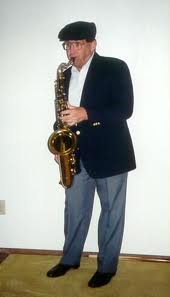 |
 |
 |
 |
 |
 |
#220115 - 09/14/04 04:48 PM
 Re: Instant Piano for hopelessly busy people
Re: Instant Piano for hopelessly busy people
|

Senior Member

Registered: 02/04/01
Posts: 2071
Loc: Fruita, Colorado, USA
|
In the sixties a friend developed Rheumatoid Arthritis He couldn't do very much. He knew I taught my self chord theory. He asked me to teach him.
We sat down at my piano for 8 hours one day. The next day he comes over and says how does this sound. He plays the chords to "I Left My Heart In San Francisco". Well most of them anyway.
Basically I taught him in about the same fashion as the PBS show guy does. It's simple. Throw a b c d e f g in the garbage, it confuses many people. Now this statement isn't true if you want to play classical. If you want to play classical, you must go through the boring teaching routine.
If you just want to chord and sing on an arranger, follow the list below. First a necessary honest evaluation of yourself. If you can't hear if you are playing the scale correctly, you’re like the tin ear singer we have talked about, you won't be able to do it without a teacher. But if you can play the scale by ear, again throw the a b c d e f g in the garbage. It’s imperative that you can hear the scale to use this method
1. Start anywhere on a keyboard or piano and play a scale. I mean anywhere you want.
2. Play it again, but this time pick out the first, third and fifth note that you play.
3. Play these three notes together. The first of the scale the third of the scale and the fifth of the scale all at the same time and that's a major chord. I know it sounds too simple, however, its a fact. At this point you don't need to know if it's "a b c d e f g." You're learning that the first, third and fifth note of any scale is a chord regardless of what the name of it is.
4. Now pick out the 7th note in that scale and add it to the other three notes that you've found and you have the major 7th chord.
5. Flatten the 7th and now you have a Dom 7th chord.
6. Pick out the 6th note and guess what chord that might be.
This number system is very simple and it works. As you go along, teach yourself what the name of the keys on the keyboard are. Such as "a b c d e f g" at a later time after you're comfortable with the first third and fifth notes of a scale theory.
After you are comfortable with this method, you can learn the augmented, diminished and minor chords easy. Don’t forget practice them with your left hand so that the right hand will be free. This is what the arranger keyboard was made for. If you try to use it other than what it was designed for you’ll be frustrated like some one else on this forum is.
If you learn to form the chords with your left hand, you'll be able to have the right hand free to play melodies, solos etc.
A couple of months ago, I told my wife, look what this guy on PBS is selling. I figured this out myself and taught it to a friend 30 years ago.
The PBS guy did used picture cards, but counting the notes in the scale and figuring out what notes to use sets this in your mind very quick and you will become proficient at it very quickly if you apply yourself, and it is more fun than spending 6 months learning that a quarter note gets a beat the eighth note gets a half beat etc.
I have no doubt that 1,000's of people probably have become disgusted with this very slow method over the years that might have been able to be a decent entertainer if taught the simple numbered note chord system.
After you learn how to form a chord and figure out what a chord is, you can get a Real Fake book and play 1000's of tunes. If I can help, email me.
_________________________
I'm not prejudiced, I hate everybody!! Ha ha! My Sister-In-Law had this tee shirt. She was a riot!!!
|
|
Top
|
|
|
|
|
 |
 |
 |
 |
 |
 |
|
|

